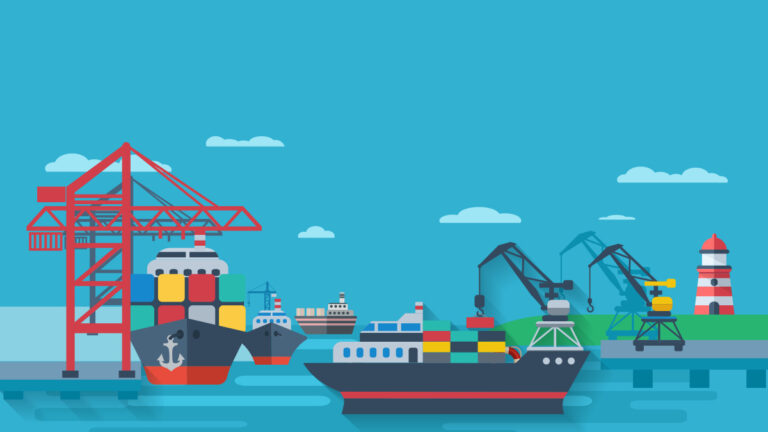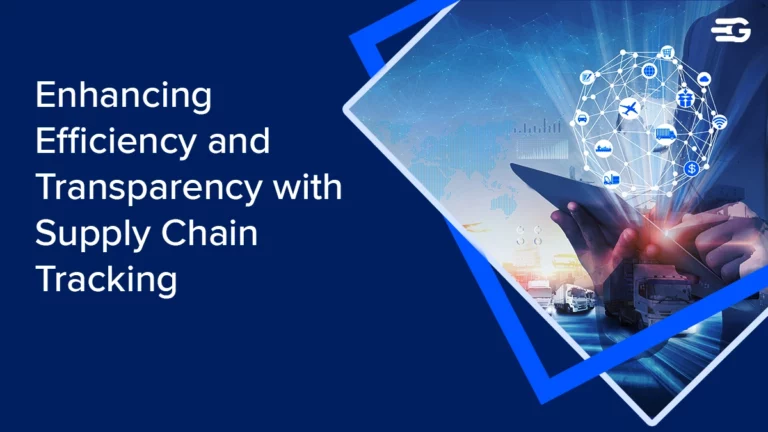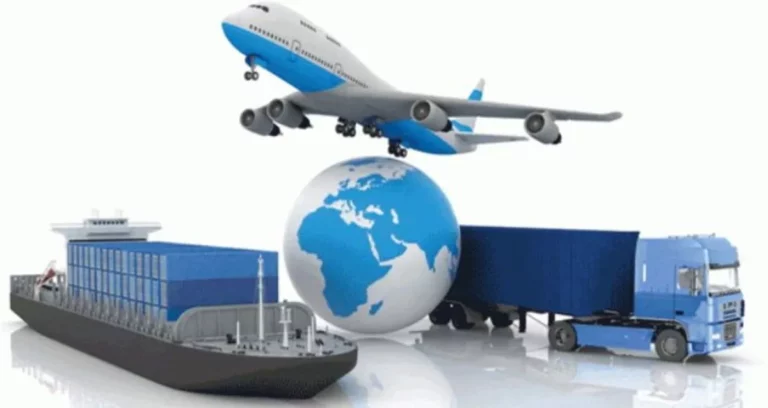Understanding the Bill of Lading: A Comprehensive Guide for Logistics Professionals
Goods traverse continents and oceans, their seamless flow is the lifeblood of international trade. Yet, amidst this, a single document serves as the maestro, ensuring harmony and clarity: the Bill of Lading (BOL).This guide delves into the profound meaning and importance of the Bill of Lading. Logistics professionals, supply chain managers, shipping coordinators, and business owners engaged in the thrilling world of import and export will learn about BOL’s multifaceted role.
What is a Bill of Lading?
A Bill of Lading acts as a tripartite agreement between a shipper, a carrier (transport company), and a consignee (receiver). It serves three key purposes:
- Receipt for Shipped Goods: The BOL acknowledges that the carrier has received the goods from the shipper in the condition described in the document.
- Contract of Carriage: It outlines the terms and conditions for transporting the cargo, including the responsibilities of each party, freight charges, and agreed-upon delivery timelines.
- Document of Title: In some cases, the BOL can serve as a negotiable document that transfers ownership of the goods.
Streamline your logistics with GoComet’s real-time Bill of Lading tracking. Get instant updates and automated notifications for your shipments.
The Multifaceted Functions of the Bill of Lading
The Bill of Lading plays a multifaceted role in ensuring the smooth operation of your supply chain. It has various functions:
As a Receipt of Goods
The BOL serves as a crucial record that the carrier has taken physical possession of the cargo. It details the quantity, description of the goods, and their condition upon receipt. This documented record protects both the shipper and the carrier. In case of any discrepancies upon delivery, the BOL acts as a reference point for resolving disputes.
As a Contract of Carriage
The BOL functions as a binding contract that outlines the agreed-upon terms for transporting the goods. These terms typically include:
- The origin and destination of the shipment
- The agreed-upon transportation route
- The responsibilities of the shipper and carrier (e.g., loading/unloading, packing requirements)
- Freight charges and any additional fees
- The timeframe for delivery
By clearly outlining these terms, the BOL helps prevent misunderstandings and ensures all parties involved are on the same page.
As a Document of Title
There are two main types of Bills of Lading: Straight Bills and Order Bills. A Straight Bill of Lading is non-negotiable, meaning it simply acknowledges receipt of the goods and serves as a contract of carriage. An Order Bill of Lading, however, is transferable. By endorsing the Order Bill, the shipper can transfer ownership of the goods to a third party, typically used in letter of credit transactions where a bank guarantees payment upon presentation of the endorsed Bill of Lading.
Different Types of Bills of Lading
As mentioned earlier, there are two primary types of Bills of Lading used in international trade:
- Straight Bill of Lading: This is the most common type, used for domestic shipments or international transactions where ownership of the goods has already been transferred. It serves as a receipt and a contract of carriage but is not negotiable.
- Order Bill of Lading: This type allows for the transfer of ownership of the goods. The consignee named on the Bill of Lading can be changed by endorsement, making it ideal for situations where payment is secured through a letter of credit.
The choice between a Straight Bill and an Order Bill depends on the specific needs of the transaction.
The Legal Implications of the Bill of Lading
The Bill of Lading is a legally enforceable document. In the event of disputes or cargo damage during transportation, the BOL serves as a key piece of evidence for claims and helps determine liability.
Here’s a closer look at the legal implications of the Bill of Lading:
- Enforceability: The terms and conditions outlined in the BOL are legally binding on all parties involved – the shipper, the carrier, and the consignee.
- Dispute Resolution: In case of cargo loss, damage, or non-delivery, the Bill of Lading serves as a crucial document for filing claims with the carrier. The details on the BOL, such as the condition of the goods upon receipt, play a vital role in determining liability and resolving disputes.
Practical Insights: Preparing and Managing Bills of Lading
Accuracy is of the utmost importance when we discuss a Bill of Lading. Even more general inquiries can result in delays, added costs, and perhaps even legal repercussions. Preparing a Bill of Lading requires a step-by-step approach:
- Gather Information: The initial step is to note down all the necessary details of the shipment such as the names and addresses of the shipper, consignee, and notify party (if any) as well. With that, you must also prepare about goods, like their quantities, weight, dimensions, and, of course, their detailed description.
- Navigate the Labyrinth of Bill of Lading Choices: Check the available Bill of Lading types and select the option that suits you the best. A straight bill is enough for billing domestic cargo or a case of consignee ownership that has already been transferred. Require another document of the custom known as a Bill of lading if the property is transferred on the way.
- Master the Art of BOL Completion: Check to ensure any information on the Bill of Lading is correct and complete. We carry vital information like the port of loading, port of discharge, incoterms (international commercial terms where buyer and seller define their responsibilities), and any special handling instructions too.
- Seal the Pact with Signatures: The signed Bill of Lading must be finally obtained by the signatures of the agents of the shipper and the carriers, once it has been completed. It signifies conclusively, that they have read, understood, and agreed to the terms and conditions elucidated in the document.
- Preserve Your Records: One of the most essential things is to keep the B/L copy for your reference. The shipper tends to be left with the original paperwork whilst the carrier and consignee are given the copies.
The Future of Bills of Lading: Digital Transformation
The logistics industry is embracing digital transformation, and the Bill of Lading is no exception. Traditional paper-based BOLs are gradually being replaced by Electronic Bills of Lading (eBLs).
eBLs offer several advantages over traditional paper documents:
- Increased Efficiency: eBLs streamline the process by enabling electronic transmission of the Bill of Lading, eliminating the need for physical copies and courier services.
- Enhanced Security: Blockchain technology can be used to create secure and tamper-proof eBLs, minimizing the risk of fraud and document manipulation.
- Improved Visibility: eBLs allow for real-time tracking of cargo movement, providing greater transparency throughout the supply chain.
While eBL adoption is still evolving, it holds immense potential to revolutionize the way Bills of Lading are used in international trade.
Conclusion
An insight into the BOL (BL) is the first and foremost thing to do. To truly optimize its role in your supply chain, consider these additional points:
Standardization: The incoterms are the main tool that is used for analyzing and settling the duties between the buyer and the seller. In this regard, exhort your suppliers to accept uniformly used incoterms on the BOL.
Collaboration: Efficiently communicating with all the parties involved – shipper, carrier, consignee, and mostly banks with letters of credit transactions – is major. Put literate and straight-to-the-point words at the BOL to lower the risk of interpretations.
Risk Management: The BOL functions as a critical document when litigations are brought or contract disputes arise. Put in place credible methods of verifying factual information on the BOL before printing/issuing the Notes. Comprehensive insurance is a great example of protection against the risks of lost or damaged cargo.
Technological Integration: With industries adapting to the eBL format, Switch to solutions that would be able to integrate smoothly into your existing logistics management system. This reduces the complexity and boosts the successful application of digitalization.
You are not only limited to a basic comprehension but can optimize through the Bill of Lading after which you can have great efficiency, transparency, and risk management in your supply chain operations. The BOL, even in traditional paper form or digital version, as well as it evolves, will still be playing a key role in the free movement of goods around the planet.
Enhance your logistics efficiency with GoComet’s real-time container tracking and automated Bill of Lading management. Get instant updates, comprehensive visibility, and seamless integration across all shipment modes.





